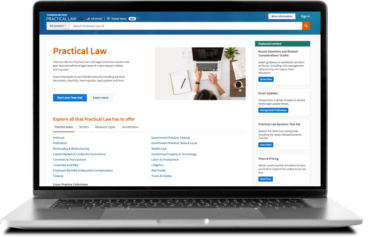Attorneys in transactional practice areas rely on model language and model documents to write effective contracts. They know full well that drafting contracts is no time to reinvent the wheel.
No two contracts are exactly alike, though. The situation, parties, and current market trends all affect how a contract comes together. So, while you are often able to look at internal documents and past work product to get started, you also rely on publicly available SEC documents to be sure you’re staying current by watching what other companies are doing in similar situations.
Many attorneys check through a series of sources – from Practical Law What’s Market to the Deal Points studies from the American Bar Association to contracts in their own document management system. A favorite source of model language has always been the Electronic Data Gathering, Analysis, and Retrieval (EDGAR) system from the Securities & Exchange Commission (SEC).
Finding documents on EDGAR
According to the SEC website, EDGAR “is intended to benefit electronic filers, enhance the speed and efficiency of SEC processing, and make corporate and financial information available to investors, the financial community and others in a matter of minutes. Electronic dissemination generates more informed investor participation and more informed securities markets.”
Some types of issues that the SEC monitors and that EDGAR provides documents for include the following:
- Corporate reporting documents like quarterly statements
- Proxy solicitations
- Tender offers
- Insider trading
- Sarbanes-Oxley Act of 2002
- Dodd-Frank Wall Street Reform and Consumer Protection Act of 2010
- Jumpstart Our Business Startups Act of 2012
While EDGAR lives up to its promise of making financial information available, it doesn’t necessarily make that information easy to access. According to Investopedia, “Search function can be clumsy, and cluttered with similar-sounding companies. It may be easier to find reports on the webpage of the reporting company.” Further, you can find documents by company or by keyword, but it’s not possible to zero in on specific types of clauses or understand the nuance.
Value-adds to SEC documents on third-party systems
Instead of using the raw filings and documents, many attorneys choose a third-party source, like the Business Law Center on Westlaw or Practical Law’s What’s Market. This enhanced content makes it easier to find specific types of model clauses, learn from industry experts, and stay current with practices in the market. Much of the raw content comes from EDGAR but benefits from insight and tagging added by attorney editors.
Attorneys appreciate not having to go to EDGAR to see the filings from the SEC, and they appreciate the added insight and structure they get from third-party systems. But what attorneys have said repeatedly is their ideal would be a way to have those insights right in their drafting environment – preferably Microsoft Word.
The ideal is here
That is exactly how Practical Law Clause Finder, Practical Law’s latest tool from Thomson Reuters, works: it brings together multiple sources used to find clause language into the place where you draft agreements – Microsoft Word. It serves up current market and gold standard language from Practical Law, SEC agreements, and your own internal documents.
With Clause Finder, you can access the best terms for your agreement and streamline your drafting – without ever leaving your document.












